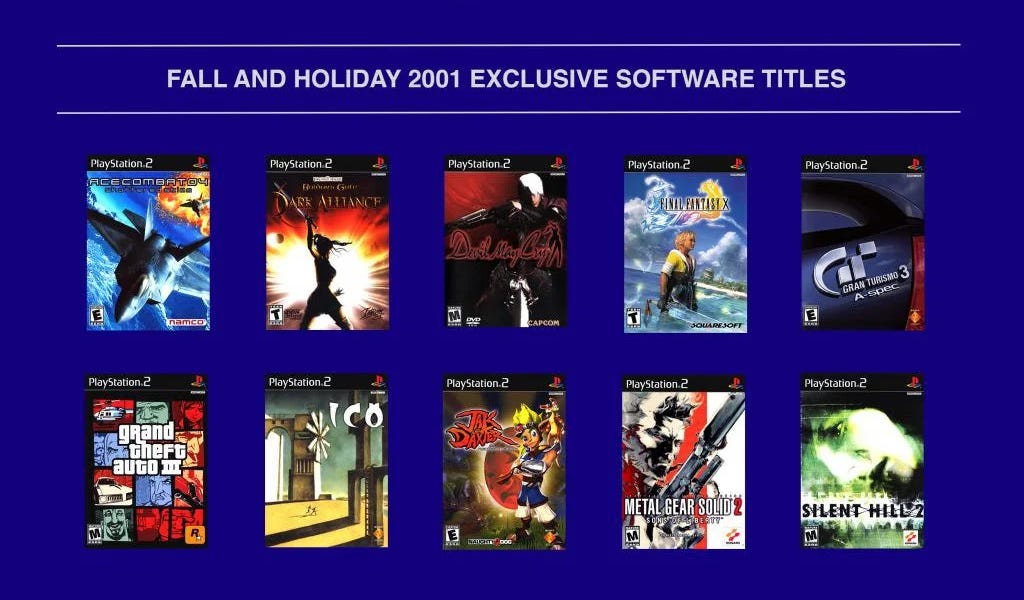I'm pretty sure going early was SOJ's idea, not SOA's. If you have irrefutable proof that it was on SOA, then I'll accept that. However, I have seen quotes from Tom saying they did not have much confidence in Saturn for the West, and did not want to launch in May because the software wasn't ready.
Which checks out with the state of early Saturn releases from May to September, as barely any new games rolled out at the time, and titles like VF & Daytona were very buggy. SEGA were not ready for a September launch but the Japanese side did not care either way: they wanted a repeat of the Japanese launch and were growing worried about PS hype momentum in the West.
PS2 was only more expensive than Dreamcast and GameCube; it was cheaper than OG Xbox because that required a $30 remote sold separately to enable DVD movie playback. There's no evidence OG Xbox was easier to work on than PS2 and I'd argue the lack of 3P support compared to PS2 suggests it wasn't monumentally easier. It was simply more familiar to PC devs like Bethesda already used to x86 architecture and had been making games on that for over a decade.
To many devs not from the PC scene, OG Xbox was just as esoteric to them as the PS2 seemed to various Western devs. Which is kind of another thing: most of the complaints PS2 was hard to develop for came from Western studios. They weren't used to programming in the same manner Japanese devs were; some Japanese devs even loved the Saturn and considered it easy to develop for, so the same applied with some of them towards PS2.
You're overselling the OG Xbox; it wasn't all-around more powerful than PS2, GameCube or even the Dreamcast in some areas, and I mentioned some of those earlier. The 64 MB RAM and 8 GB HDD really helped it in performance areas though. Its exclusive sports games meant shit for the American market because none of them gained traction compared to Madden, the 2K games, FIFA etc. all of which were on PS2 and where PS2 was the target platform. Halo was a strong launch game but so was Super Mario 64 and in both cases the respective systems lost a lot of steam shortly after launch because they couldn't match the variety & breadth of games on Sony's consoles.
Also the RenderWare engine helped make multiplatform support a lot easier that gen and many devs used it, even some Japanese one. So that mitigated many of the dev challenges on PS2 for devs until they got to learn the architecture better, so they could target more low-level optimizations.
Yes.
Panzer Dragoon was a very arcade-style game so even if it wasn't first released in arcades, it came off as an arcade title. And like many of SEGA's arcade ports to Saturn that gen, ran into the problem of too little content for the price. If you played a game like Panzer Dragoon at a demo kiosk back in the day you basically got the full taste of the game in 5-10 minutes.
Sure you could master mechanics to increase score and get perfect runs but that as an appealing factor was starting to fall out of favor with gamers around the time. The reason why SEGA's arcade ports didn't do much for Saturn in the West (in Japan VF definitely did but it's prob also no coincidence that Saturn sales fell off hard there once the VF games started drying up with no Saturn port of VF3, while PS was getting stuff like Tekken 2, 3, Bushido Blade, Tobal No 2 etc.), is because they lacked sufficient amount of new content for home release.
Compare that to even early Namco arcade ports like Ridge Racer, Tekken, or even Cyber Sled which were stuffed with a lot of cool new additions just for the home ports, plus those games just had a style to them that was more appealing to Western players than SEGA's comparable titles like VF. Although, Daytona had a lot of style and was a juggernaut in arcades during the '90s, so the Saturn port SHOULD have been a major deal.
But oh if only SEGA didn't completely bungle the first impressions with a bad port short on any new content!







